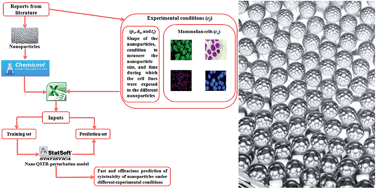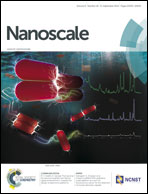Computer-aided nanotoxicology: assessing cytotoxicity of nanoparticles under diverse experimental conditions by using a novel QSTR-perturbation approach†
Abstract
Nowadays, the interest in the search for new nanomaterials with improved electrical, optical, catalytic and biological properties has increased. Despite the potential benefits that can be gathered from the use of nanoparticles, only little attention has been paid to their possible toxic effects that may affect human health. In this context, several assays have been carried out to evaluate the cytotoxicity of nanoparticles in mammalian cells. Owing to the cost in both resources and time involved in such toxicological assays, there has been a considerable increase in the interest towards alternative computational methods, like the application of quantitative structure–activity/toxicity relationship (QSAR/QSTR) models for risk assessment of nanoparticles. However, most QSAR/QSTR models developed so far have predicted cytotoxicity against only one cell line, and they did not provide information regarding the influence of important factors rather than composition or size. This work reports a QSTR-perturbation model aiming at simultaneously predicting the cytotoxicity of different nanoparticles against several mammalian cell lines, and also considering different times of exposure of the cell lines, as well as the chemical composition of nanoparticles, size, conditions under which the size was measured, and shape. The derived QSTR-perturbation model, using a dataset of 1681 cases (nanoparticle–nanoparticle pairs), exhibited an accuracy higher than 93% for both training and prediction sets. In order to demonstrate the practical applicability of our model, the cytotoxicity of different silica (SiO2), nickel (Ni), and nickel(II) oxide (NiO) nanoparticles were predicted and found to be in very good agreement with experimental reports. To the best of our knowledge, this is the first attempt to simultaneously predict the cytotoxicity of nanoparticles under multiple experimental conditions by applying a single unique QSTR model.

- This article is part of the themed collection: Nanotoxicology

 Please wait while we load your content...
Please wait while we load your content...